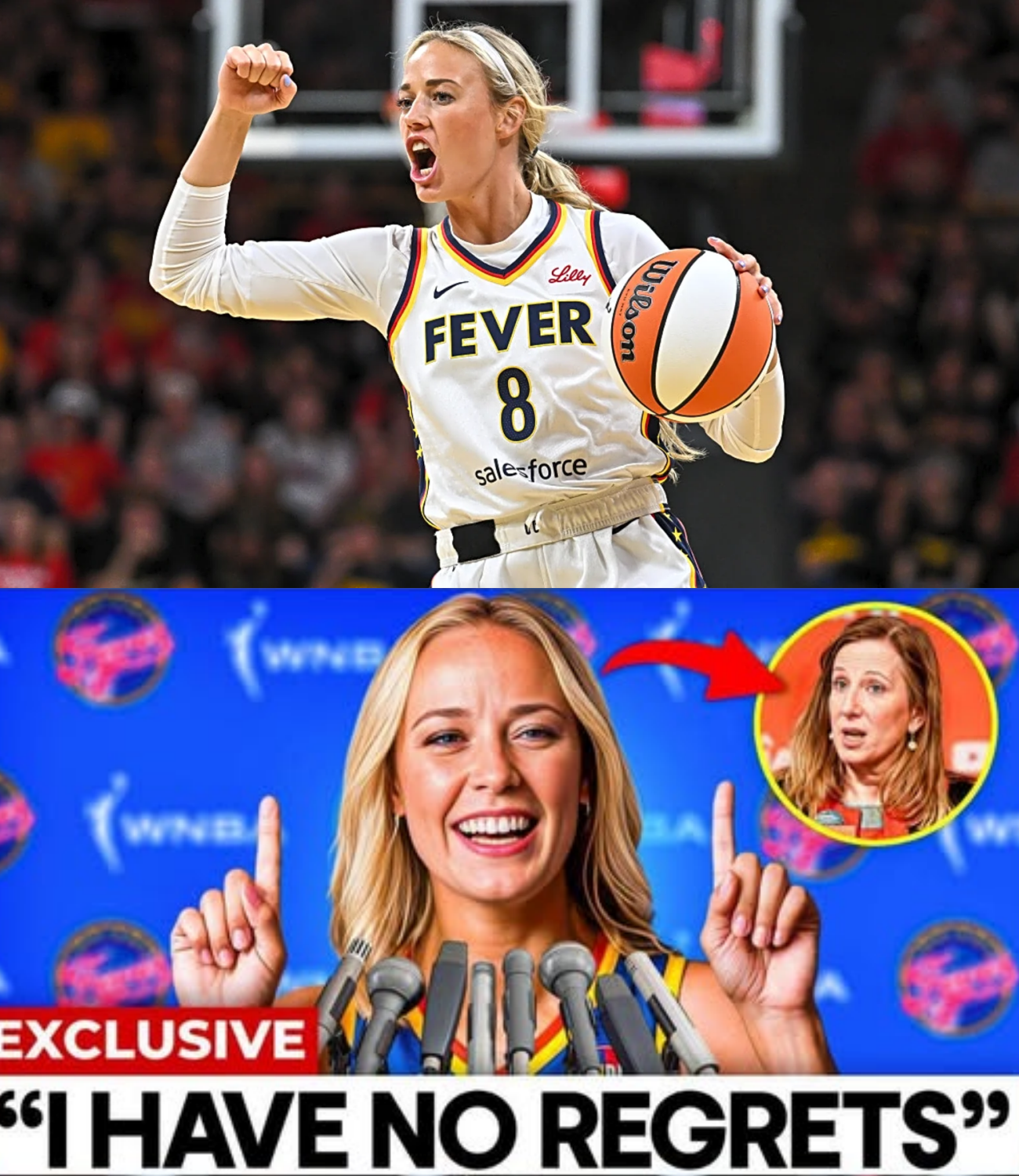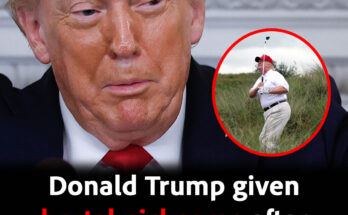Sophie Cunningham Turns WNBA Fine into Viral Stardom, Exposes League’s Star Protection Dilemma with Caitlin Clark
 INDIANAPOLIS, IN – What the WNBA intended as a routine disciplinary action against Indiana Fever guard Sophie Cunningham has spiraled into a public relations crisis for the league and a career-defining moment for the veteran player. A $400 fine, meant to quietly admonish Cunningham for an on-court incident, has instead amplified her voice, transformed her into a viral sensation, and starkly exposed what many fans and analysts perceive as the WNBA’s inadequate protection of its most valuable asset, Caitlin Clark.
INDIANAPOLIS, IN – What the WNBA intended as a routine disciplinary action against Indiana Fever guard Sophie Cunningham has spiraled into a public relations crisis for the league and a career-defining moment for the veteran player. A $400 fine, meant to quietly admonish Cunningham for an on-court incident, has instead amplified her voice, transformed her into a viral sensation, and starkly exposed what many fans and analysts perceive as the WNBA’s inadequate protection of its most valuable asset, Caitlin Clark.
The catalyst for this unforeseen explosion occurred during a recent Fever game, where Clark, the league’s undeniable draw and most frequently targeted player, once again absorbed a series of aggressive fouls. A poke to the eye, a shove to the ground—the familiar pattern of intense physicality directed at Clark continued. While officials eventually issued a flagrant foul and a technical foul, the collective sentiment among viewers was that these measures were insufficient to deter further incidents.
But this time, Sophie Cunningham, a tenacious guard in her first season with the Fever, refused to stand by. With just 46 seconds left on the clock, she made a decisive move, wrapping up the opposing player who had just targeted Clark and pulling her to the floor. It was a clear act of on-court retaliation, a visceral message delivered in real-time. Cunningham was promptly ejected, and the WNBA predictably levied a $400 fine. Yet, as she exited the court, her expression conveyed not remorse, but a quiet, almost defiant, acceptance of the cost.
What followed was an organic, explosive surge of public support that few could have anticipated. In less than 48 hours, Cunningham’s TikTok following tripled, her official Indiana Fever jersey sold out, and a lip-sync video featuring a half-smile and a palpable lack of apology to Sabrina Carpenter’s “Manchild” quickly amassed 1.2 million views. Her Instagram account gained an astonishing 350,000 new followers, and a torrent of sponsorship offers from major brands including Adidas, Quest, and Liquid I.V. began pouring in. STN Digital, a prominent sports marketing firm, estimated the brand exposure value generated by that singular moment to be in excess of $1 million.

A relatively minor $400 fine had, in essence, bankrolled a viral empire for Sophie Cunningham. And notably, her stance remains unapologetic. When later asked about the incident, Cunningham’s response was direct and pointed: “It’s been building for years. They don’t protect the star of the league. So I will. Every single time.”In that instant, Sophie Cunningham transitioned from a reliable rotation player to the unexpected “enforcer” for the Indiana Fever—a role the WNBA seemingly never saw coming, or perhaps, actively sought to avoid.
Caitlin Clark herself maintained a conspicuous silence on the matter, a quietude that many interpreted as a powerful, unspoken endorsement of Cunningham’s actions. As Clark walked out of the arena, her face unsmiling, her eyes forward and focused, fans felt they could read the message: something fundamental had shifted. The sentiment brewing among the fan base, particularly those who have keenly observed Clark’s challenging rookie and sophomore seasons, was that they were witnessing what the league itself had consistently ignored.
Statistical analysis underscores the fans’ frustration. In her 2024 rookie campaign, Caitlin Clark was subjected to an astounding 17% of all flagrant fouls called across the entire WNBA, despite playing fewer minutes than most veteran players. This translated to 12 flagrant fouls and dozens of other hard hits, with what many perceived as a glaring lack of accountability from officials and the league office. The 2025 season, for many observers, has continued this troubling pattern. Despite repeated calls from analysts for greater player protection for the league’s burgeoning centerpiece, referees have frequently “swallowed the whistle,” and the league itself has maintained a disconcerting silence on the pervasive physicality directed at Clark.
Sophie Cunningham’s actions, however, shattered that silence decisively. And the fans, particularly on social media platforms, rallied unequivocally behind her. The hashtag #ProtectClark trended for a remarkable 72 consecutive hours, while clips of the incident—featuring meticulous side-by-side breakdowns, slow-motion replays, and impassioned commentary—flooded X (formerly Twitter) and TikTok. One widely circulated post succinctly captured the prevailing sentiment: “Sophie turned a $400 fine into a million-dollar middle finger to the league.”

Yet, the true magnitude of the WNBA’s embarrassment extends far beyond Cunningham’s viral moment. It lies in the stark revelation of the league’s undeniable commercial dependence on Clark’s presence. Recent data provides a sobering illustration: viewership plummeted by a staggering 55% during Clark’s two-week absence in June due to injury. Similarly, arena attendance figures dropped by as much as 30% in games where she was not on the court. While the WNBA has made concerted efforts to market a “balanced rookie class” and highlight the depth of its talent, the brutal truth illuminated by television ratings is that 18 of the 21 games that crossed the crucial 1 million viewer threshold this season prominently featured Caitlin Clark.
This escalating controversy, therefore, transcends mere discussions of on-court physicality or isolated incidents. It has evolved into a profound discourse about WNBA visibility, star player protection, and the underlying power dynamics at play within the league. The WNBA’s most valuable asset—the player single-handedly driving unprecedented growth in viewership and attendance—appears to be subjected to disproportionate physical contact, yet seemed largely undefended on the court until Cunningham intervened. The league’s immediate response to her intervention? To punish her. This approach has not only alienated a significant portion of the fan base but also sparked visible discomfort among other players.
Even Las Vegas Aces head coach Becky Hammon, widely regarded as one of the most respected voices in the women’s professional basketball community, has publicly weighed in on the broader issue of officiating. Weeks before Cunningham’s incident, Hammon stated, “Too much grabbing. Too much fouling. Too little accountability.” Her comments underscore a systemic frustration that resonates far beyond a single play.
Sophie Cunningham did not simply commit a foul; she effectively forced a public reckoning, cracking open a system that many argue has claimed to celebrate its stars while subtly leaving them to fend for themselves on the court. There has been no announced reform, no strong public statement from the league office condemning targeted physical play. Instead, only a fine, a warning, and perhaps a hope that the controversy would dissipate.

